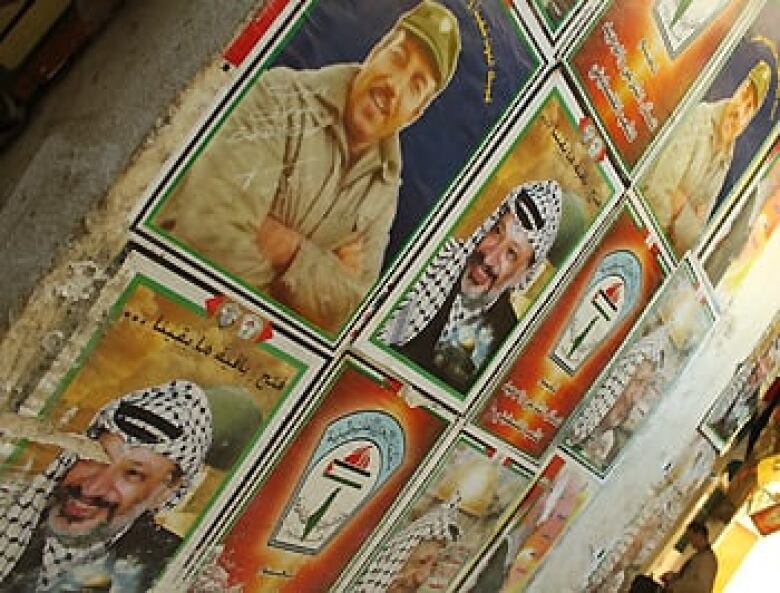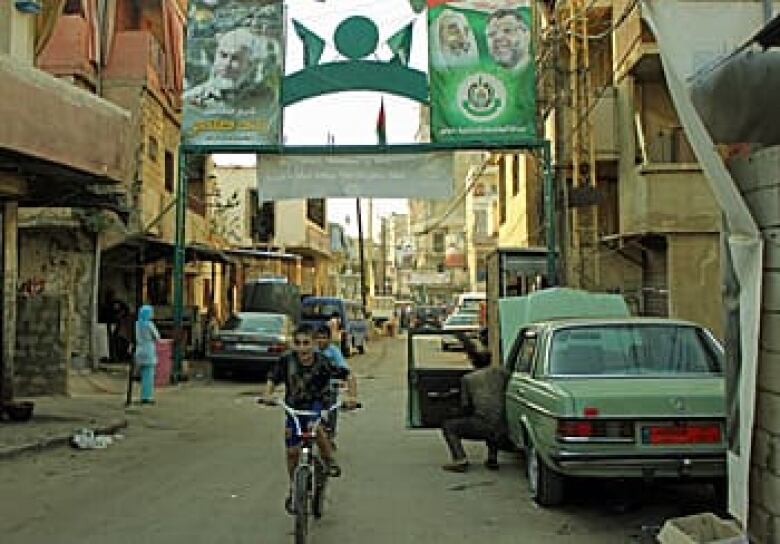DAY 6: Camp politics
Nov. 9, 2010 A few nights ago, in the early evening, residents of Shatila apparently heard what sounded like gunfire. On Monday, I asked one of our acquaintances, a member of one of the Palestinian political parties here, whether there had been any trouble that night.
"Trouble? No trouble. It was probably a wedding," he said.

It is true that Palestinians, like many other Arabs, have a penchant for unleashing a barrage of bullets at happy occasions like weddings. But it is also true that guns are part of life in Shatila.
Like all other Palestinian camps in Lebanon, Shatila has long been beyond the reach of Lebanese law, and so have any weapons contained within it just one of several reasons the camps' residents are distrusted, even feared, by many Lebanese.
If we are to believe what some Shatila residents tell us, guns are pretty common here.
"Are they common? They're in every second house," one camp official told us when the issue came up during a casual conversation.
Nahlah Ayed's Shatila blog
- Day 1: En route to Beirut
- Day 2: Small signs of progress
- Day 3: Sharing details, but with dignity
- Day 4: Artifacts of exile
- Day 5: Shatila's space problem
- Day 6: Camp politics
- Day 7: A litany of woes
- Day 8: Talking about Arafat
- Day 9: Dreaming big in Shatila
- Day 10: Living with the trauma of camp life
- Day 11: Celebrating sacrifice in Shatila
- Day 12: Stuck in Shatila
"Guys are always showing off about how many bullets they have at home," a young man told me in passing.
So far, there's been little overt evidence of weapons. Though one of the first people we saw the first day we entered Shatila was a young man sitting in front of one of the party offices cradling a Kalashnikov.
In time, we realized there are many factions and political parties here some of them remnants of those that fought during Lebanon's civil war between 1975 and 1990. And at virtually every one of their offices, a young, armed man stands guard.
The parties aren't exactly on friendly terms with each other. They are divided along the same fault lines as they are in Gaza and the West Bank, and they rarely agree on anything. Even within their loose groupings, there is rivalry and competition.
"There are two civilian administrative committees [in Shatila]: one is loyal to Hamas, and the other to Fatah, " says Khaled Abu Al Noor, a member of the Democratic Front party and the Fatah-affiliated civil committee.
Each pretends the other doesn't exist.
So, who is actually in charge? Everybody, and nobody. There is tension as a result, but only very, very rarely does that lead to gun fights in Shatila. But it has in other Palestinian camps, where some of the parties are much more heavily armed and polarized.
Ein el Helwe in Sidon in southern Lebanon, for example, where arms are much more present, regularly erupts in gunfights, terrifying residents both inside and outside the camp's limits.

Shatila, like the rest of Lebanon, has seen its fair share of violence the conflict known as the war of the camps in 1985-86 during the Lebanese civil war; the Sabra and Shatila massacre in 1982; and numerous other clashes and wars that have claimed the lives and limbs of countless civilians.
As a result,war injuries are quite common: the party official we talked to had battle scars on his face; a man we interviewed today, who was a teenage soldier during the war of the camps, has shrapnel wounds all over his body; a man we were introduced to yesterday had lost an eye.
And there are not one but two mass graves in Shatila. That alone speaks volumes about its past.
There has always been an armed presence here, though today it is much weaker than it used to be.
So, Shatila is largely quiet. The guns, presumably,are there just in case that changes.
[IMAGEGALLERY galleryid=131 size=large]













_(720p).jpg)


 OFFICIAL HD MUSIC VIDEO.jpg)
.jpg)



























































































